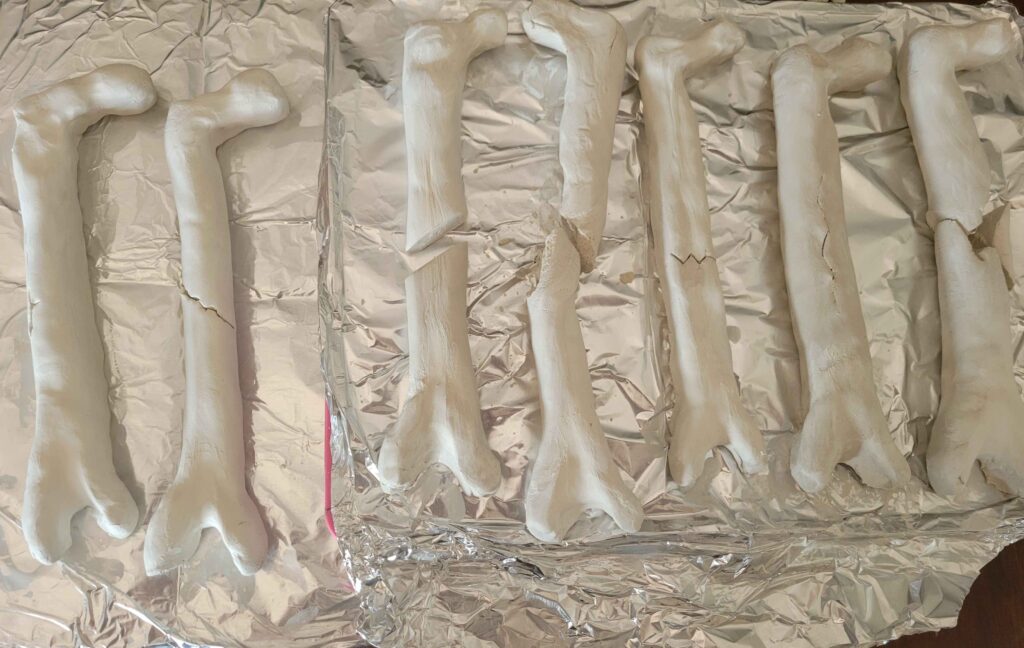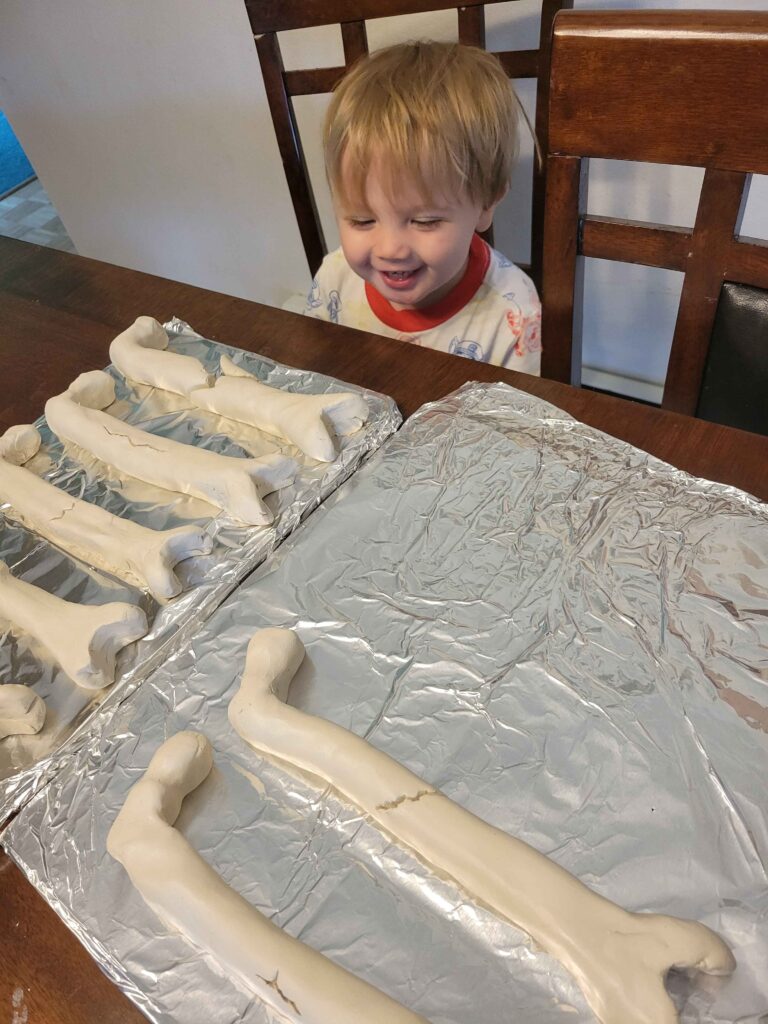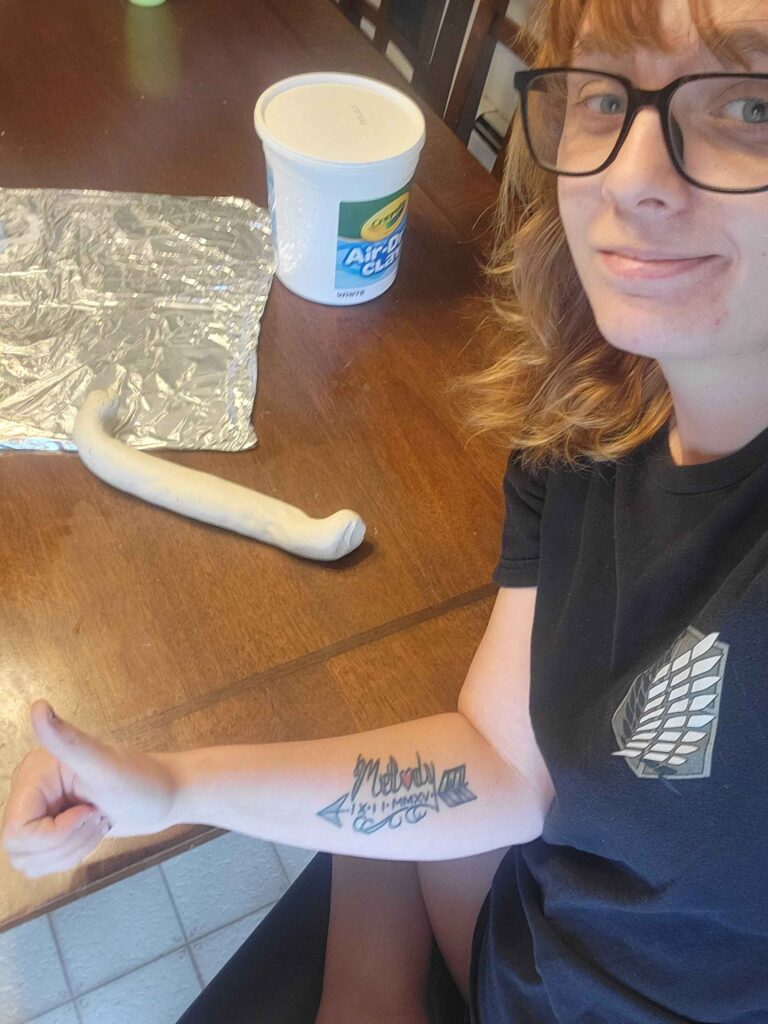
Figure 1 Greenstick Nondisplaced Displaced Compound Spiral Transverse Linear Comminuted

Figure 2 My son happy with the work I put into the making the clay femur fractures

Figure 3 is me working on the clay femur fractures
My steam project was on the classification of femur fractures. Classification of fractures was one of the learning objectives this semester. For my project I decided to use clay as my artistic medium. The reason I choose to use clay instead of a different material is because when it’s soft it is very easy to manipulate the shape of the clay allowing me to make the proximal and distal shapes of the femur to the best of my ability. Once I was okay with the shape of the femur, I created fractures using a steak knife on some of the femurs to really give it that ridged fractures and for the displaced compound I used a nonridged blade to show the clean fracture and lastly for the spiral fracture once it was dry I took both ends of the femur and twists it until it broke and laid the proximal part of the femur in the opposite direction of the distal to show the spiral fracture. My art project consisted of the seven common femur fractures. Figure one show my completed work of the seven common shaft fractures of the femur. In figure two shows my son admiring my work while it dries. In figure three I am working on my femur trying to get the shape right.
Thank you.

This project discusses the different types of fractures and illustrates examples of each type on a clay model of the femur. The femur is the longest weight-bearing bone and it lies between the hip and the knee. According to the author, the femur neck fracture is the most common type of break on this bone. The fracture classification type is based partially on the specific location where the bone is broken. The eight common fracture types are open/closed, transverse, spiral, comminuted, impacted, oblique, and greenstick. The open fracture is one where skin is broken, and a comminuted fracture is one in which several small pieces exist between the two main breaks. Spiral fractures are a case where bone has been pulled apart by a twisting action, and an impacted fracture is where one section of bone is rammed into another. Finally, an oblique fracture occurs at an angle that is not 90 degrees, and a greenstick fracture is a partial fracture on one side of the bone. There are three kinds of femur neck fractures, and women are significantly more likely to suffer from these than men. Most fractures can be treated with surgery, but if left untreated it can develop into a serious injury.